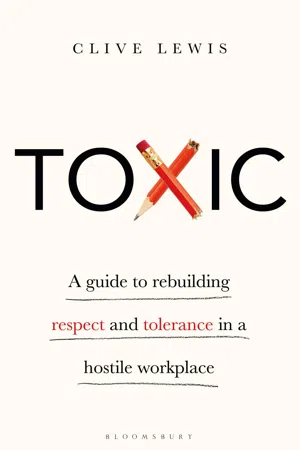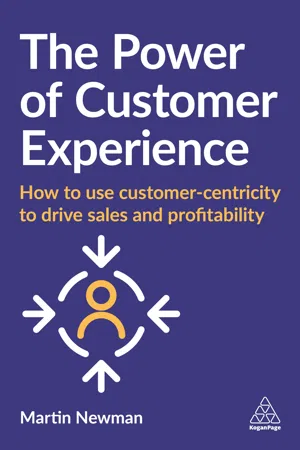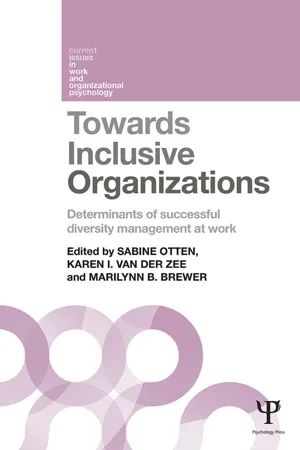Diversity in the Workplace
Diversity in the workplace refers to the variety of differences among people in an organization, including but not limited to race, gender, age, ethnicity, sexual orientation, and physical abilities. Embracing diversity in the workplace can lead to a more inclusive and innovative environment, as it brings together a wide range of perspectives and experiences.
7 Key excerpts on "Diversity in the Workplace"
- Steven G. Rogelberg(Author)
- 2016(Publication Date)
- SAGE Publications, Inc(Publisher)
...Diversity in the Workplace Diversity in the Workplace Quinetta M. Roberson Quinetta M. Roberson Roberson, Quinetta M. 316 320 Diversity in the Workplace Quinetta M. Roberson The term diversity refers to all human characteristics that make people different from one another. These differences may be represented by observable characteristics, such as gender, race, ethnic background, and age. However, these differences may also be represented by nonobservable characteristics, such as education, functional background, organizational tenure, socioeconomic background, and personality. Diversity as a workplace issue was triggered by reports published in the late 1980s indicating that the representation of women and ethnic minorities in the workforce would experience accelerated growth rates in the years ahead. Such changes in the demography of U.S. workforces implied that organizations would be required to change the ways in which people were managed. For example, as the White male demographic decreased in relative size, organizations desiring to attract and retain the highest quality talent would have to recruit from all demographic categories. Further, because such workforce changes were emerging in an increasingly global economy and marketplace, organizations desiring to remain competitive would have to create strategies for addressing the needs and demands of potential customers from a variety of cultural backgrounds...
- eBook - ePub
Toxic
A Guide to Rebuilding Respect and Tolerance in a Hostile Workplace
- Clive Lewis(Author)
- 2021(Publication Date)
- Bloomsbury Business(Publisher)
...We know that stress levels increase when one senses that their difference may be a disadvantage. 121 Sustained over long periods, stress is damaging to one’s health. We monitor how others react to us for fear of any negative evaluations which might lead to rejection. Diversity expresses the understanding of an individual’s uniqueness. It celebrates the vibrancy of not only accepting those differences but embracing them and taking full advantage of the strengths as well as any potential weaknesses. Context Over the last 50 years, despite progress, women and minorities remain under-represented across the top decision-making levels in workplaces across the world. Women still only make up just over one fifth of board director positions across Fortune 500 organizations. 122 The U.S. Bureau of Labor Statistics estimates that more than 38 million people will enter the labour force between 2016 and 2026. 123 Over this next decade, the composition of the workforce will become older and more racially and ethnically diverse. 124 As these demographics shift, organizations face the challenge of embracing individual differences, marginalized groups and those with wide-ranging skills. The first equality laws in the US were introduced with the Civil Rights Act of 1964. Title VII covered laws concerning discrimination in the workplace protecting factors such as sex, religion, national origin, race and retaliation. They have now been updated to include age, disability, equal pay, genetic information, harassment, pregnancy and sexual harassment. The UK has similar discrimination protection in the Equality Act that covers age, race, sex, gender reassignment, disability, religion or belief, sexual orientation, marriage or civil partnership, and pregnancy and maternity. With the strides made in the equality laws, the workplace should be a better place for all...
- eBook - ePub
Diversity in Organizations
A Critical Examination
- Cedric Herring, Loren Henderson(Authors)
- 2014(Publication Date)
- Routledge(Publisher)
...4 Achieving Workplace Diversity As the population of the United States continues to become more diverse, employers have come to realize that their success may be tied to the diversity of their workforce and practices. 1 In particular, the recruitment, promotion, and retention of employees of color are increasingly important to success in business organizations. 2 Although there are several moral and social arguments for recruiting diverse employees, the most compelling reasons to pursue a diverse workforce for many employers is that excellence in diversity recruiting relates to more customers, better service, and better performance. There is a global battle for talent, and any company that restricts its search for talent in any way—by race, gender, national origin, sexual orientation, or any other factor—gives its competitors who do not restrict their talent searches in such ways the clear edge that they can use as a competitive advantage. Such arguments resonate with employers of all sizes and industries. And recent research on the link between diversity and the bottom line has provided evidence supporting such thinking. 3 Proponents of diversity suggest that in the corporate setting, diversity represents a compelling interest that will help meet customers’ needs, enrich understanding of the pulse of the marketplace, and improve the quality of products and services offered. 4 With respect to employees, diversity brings with it different perspectives. Because of the clear competitive advantages of diversity, employers increasingly have relied on a diverse workforce to improve their performance. Because diversity provides fresh ideas, strong growth, positive company images, fewer discrimination lawsuits, and an enhanced ability to hire qualified workers, employers should be aggressive about workforce diversity. 5 Diversity is not just about hiring minorities. It also involves cultivating and retaining talent from as broad a talent pool as possible...
- Stephen Taylor, Graham Perkins(Authors)
- 2021(Publication Date)
- CIPD - Kogan Page(Publisher)
...The presence of such issues suggests that, whilst progress has been made, it would be demonstrably fallacious to argue that further steps cannot be taken to promote equality and diversity within our organisations. It has been argued that discriminatory stereotypes and attitudes persist because of a number of deep-seated psychological mechanisms, and although an exploration of these is beyond the scope of the current book, this is an area of active scholarly and practitioner research interest. Moving on from the subject of equality, we come to diversity. Many scholars and writers within this field conflate the terms ‘diversity’ and ‘inclusion’, which again adds a level of confusion to the territory. For our purposes, the CIPD (2018) suggests a straightforward definition: Diversity is about recognising difference, but not actively leveraging it to drive organisational success. It’s acknowledging the benefit of having a range of perspectives in decision-making and the workforce being representative of the organisation’s customers. Perhaps the key point of note within this definition is the idea that diversity is about the recognition of difference, but that this does not automatically extend to our organisations actively taking advantage of difference to drive improved performance. This presents somewhat of a problem with current approaches to diversity management, but helpfully a resolution is found when we consider the subject of ‘inclusion’: Inclusion is where difference is seen as a benefit, and where perspectives and differences are shared, leading to better decisions. An inclusive working environment is one in which everyone feels valued, that their contribution matters and they are able to perform to their full potential, no matter their background, identity or circumstances...
- eBook - ePub
The Power of Customer Experience
How to Use Customer-centricity to Drive Sales and Profitability
- Martin Newman(Author)
- 2021(Publication Date)
- Kogan Page(Publisher)
...09 Diversity and inclusion On the outside and the inside WHAT YOU WILL LEARN IN THIS CHAPTER There is a broad range of people and requirements that fall within diversity. There are obvious benefits of being a diverse organization. Brands that have embraced diversity and inclusion are more customer-centric and ultimately more successful. There is a risk of thinking of diversity on its own. It has the potential to cause controversy, particularly if it’s seen as a box-ticking exercise rather than something that changes the business fundamentally and makes it a better place to work and a brand that connects more effectively with a broader range of customers. To be effective, the approach must be one of both diversity and inclusion. It is inclusion that leads to genuine participation. The diversity and inclusivity of the business should be something that’s a cause for celebration and a core part of the culture and DNA of the brand. The broad range of requirements that fall within diversity Figure 9.1 Core areas of diversity Diversity as a term is often interpreted too narrowly. Many perceive it to be only about gender or ethnicity. While those are very much part of the requirements for a diverse organization, it is much broader than that. It is too often approached like many other industry buzzwords, such as social responsibility, with a focus on ticking a box, proving to shareholders that it’s an ‘issue’ that has been addressed. The requirement to be a diverse business cannot be met by quotas. Nor can it be achieved by adding a few lines to the annual report. To be a truly diverse business, you have to start with your team. A diverse workforce should be representative of society in all areas, including gender expression, age, ethnicity, religion, disability, hidden disabilities, sexuality and demographics (Figure 9.1). Of course, all of this also applies to customers and how it affects their experience...
- eBook - ePub
Managing Diversity and Inclusion
An International Perspective
- Jawad Syed, Mustafa Ozbilgin(Authors)
- 2019(Publication Date)
- SAGE Publications Ltd(Publisher)
...The book will provide the reader with an in-depth and contextual understanding of workforce diversity and its relevance to managing people and organisations. The demographics of the population and the workplace are changing worldwide because of factors such as an increasing number of ethnic and religious minorities, women, people with disabilities, out LGBTI+ individuals, older persons and single people with caring responsibilities in the workforce (Bisin et al., 2011; Jonsen et al., 2019). Accordingly, there is a need to understand and effectively manage workforce diversity, not only to enhance business outcomes but also to create an inclusive workplace in a socially responsible manner (Syed and Kramar, 2009; Harjoto et al., 2015). There is also a need to create institutional and organisational structures and cultures to enable employee inclusion in the work group as involving the satisfaction of the needs of both belongingness and uniqueness (Brewer and Silver, 2000; Syed and Boje, 2011). Bringing together eminent international scholars, this book places a premium on critical thinking and analytical abilities that can be successfully applied to DM. Our take on the theory and practice of DM is far from US-centric; our choice of topics as well as geographies covered in the text is an attempt to situate and understand DM in the European context and beyond. What we know of diversity at work predominantly emanates from the industrialised democracies of the world (Syed and Özbilgin, 2009; Tatli et al., 2012; Ozbilgin et al., 2015). While some industrialised countries have adopted a voluntary approach to issues of diversity at work, others have developed sophisticated regulatory measures (Özbilgin and Tatli, 2011). One significant example is the European Union (EU). Diversity in the Workplace is an issue which is coming to the fore in all EU member states and the EU is undertaking legislative initiatives in the area of diversity...
- eBook - ePub
Towards Inclusive Organizations
Determinants of successful diversity management at work
- Sabine Otten, Karen van der Zee, Marilynn B. Brewer, Sabine Otten, Karen van der Zee, Marilynn B. Brewer(Authors)
- 2014(Publication Date)
- Psychology Press(Publisher)
...3 Organizational perspectives on diversity Karen van der Zee and Sabine Otten Influenced by the increasing ethnic variation in Western societies, cultural diversity in organizations is also on the rise. As a consequence, and as the following example of IBM illustrates, prominent organizations incorporate diversity-related ideologies in their mission statements: IBM’s enduring commitment to diversity is one of the reasons we can credibly say that IBM is one of the world’s leading globally integrated enterprises. We also understand that diversity goes beyond fair hiring practices and protection for all employees. It also includes a focus on how those disparate pieces fit together to create an innovative, integrated whole. We call this approach “inclusion.” While our differences shape who we are as individual IBMers, our shared corporate culture and values remain central to our mutual success. IBMers around the world work in an environment where diversity— including diversity of thought—is the norm, which yields a commitment to creating client innovation in every part of our business. (“Diversity & Inclusion,” p. 10, www-03.ibm.com/employment/us/diverse/downloads/ibm_diversity_brochure.pdf) In theory, diversity seems to offer organizations opportunities for flexibility and innovation. The literature has repeatedly stressed the potential for diverse groups to be more creative and to generate better decisions (e.g. Mannix & Neale, 2005). This is because, with more available perspectives on a situation, there should be a greater potential for having the “right solution” or for generating unconventional approaches. The mission statement of IBM (which is representative of that of a great many other companies) clearly reflects such a belief that diversity among its staff may help stimulate such desirable outcomes for their company. Unfortunately, reality is less cheerful than beliefs expressed in mission statements...






